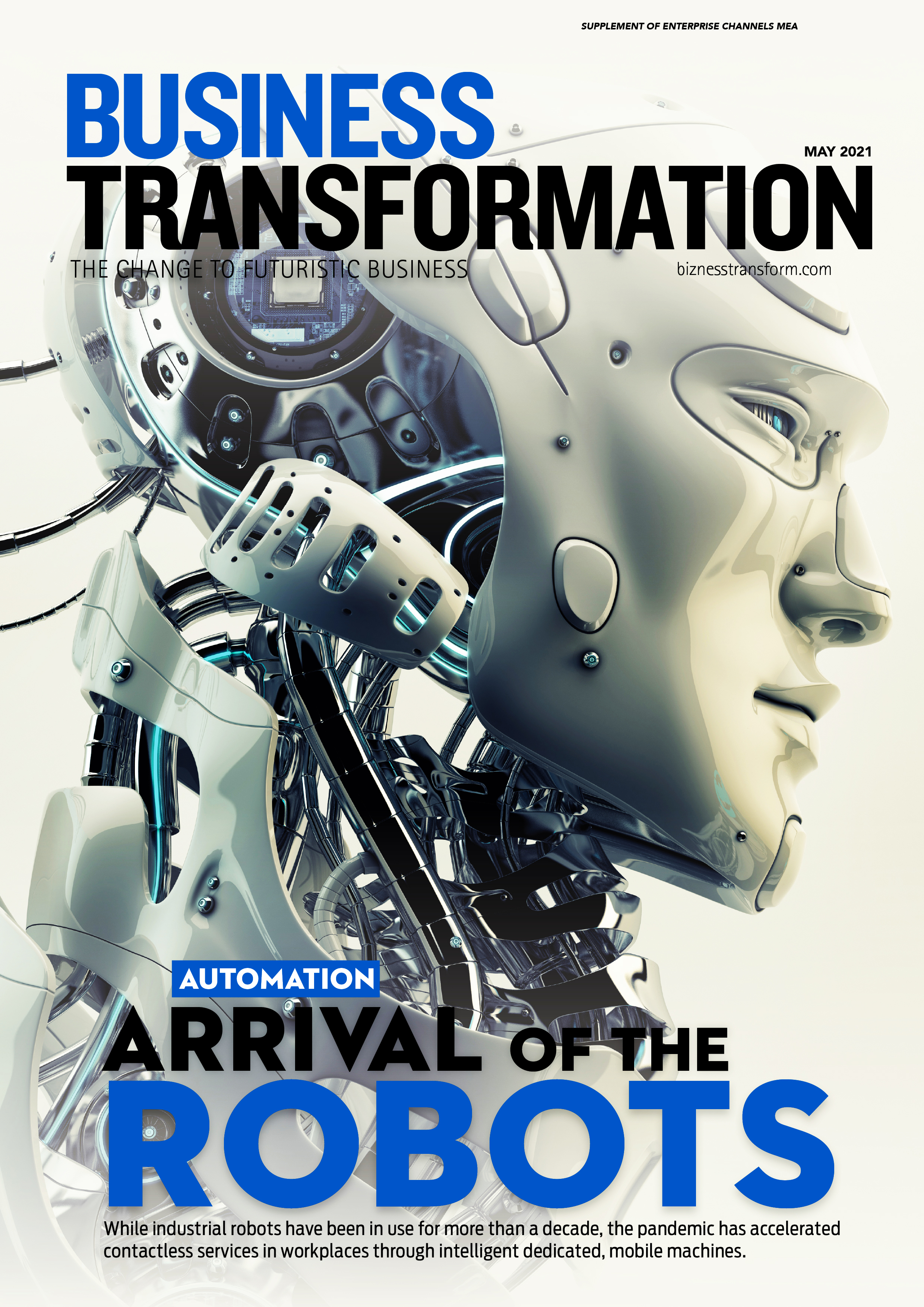Asimov’s laws of robotics

The global community continues to be challenged with vaccines, mutations, travel corridors, and movement and interaction of humans. Looking back into the seventies, one of the most forward-looking science fiction writers of the previous decade, Isaac Asimov wrote the novel Naked Sun and also conceptualized the three laws of robotics.
Asimov visualized a society where there is no more human face to face interaction. Everything is managed by robots and the three laws of robotics governed the design, safety and behavior of robots and humans. Today, humankind still has a way to go to reach that advanced level of development, but we are making progress.
In this month’s edition we get a hands-on feel of two robots made available for operational review by Jacky’s Business Solutions, a leading exclusive distributor of robotic solutions in the GCC. The Double 3 robot has been boosted by the growth of offsite, remote workers. It is the first step towards a robotic substitute of human presence in the office workplace. It is easy to use and quite powerful in its functionality and simplicity.
Temi Robot on the other hand blends two important innovations into one. The first is the ability to communicate and broadcast video and audio feeds and Internet content. The second is the ability to create interactive routines and allow Temi to learn from them.
The manufacturers have created the Robox Navigation brain that has these inbuilt capabilities allowing consumers to create a semi-intelligent personal assistant at the home. Integrating with Alexa, the capabilities of this robot are realized by continuous usage and building expectations for it to meet.
Taking advantage of the growing interest in robots, Jacky’s Business Solutions is offering both business and consumer robots around specific use cases. It is offering solutions through Softbank’s Pepper, Pudu, Double Robotics, and Temi.
As an example, Ashish Panjabi at Jacky’s Business Solutions, explains that the Pudu Robot is suited for restaurants that are trying to minimize human contact. It can be programmed to deliver prepared food to specific tables, and bring back the used dishes. In this manner most human face to face contact can be eliminated for diners.
According to Jimmy Joseph at CADD Emirates, robots are being adopted in hospitality for information sharing, food and beverage, in-room delivery, with some far eastern countries taking the lead. Joseph differentiates the three leading form factors.
Humanoid robots are robots that look like and or mimic human behavior. An industrial robot is an automatically controlled, reprogrammable, multipurpose manipulator programmable in three or more axes. Consumer robots are robots you can buy and use just for fun or to help you with tasks and chores.
One challenge is to create bio-inspired robots, including a battery to match metabolic conversion. Another challenge is better power sources, which let the robots operate wirelessly in unstructured environments. Robots need to be able to operate in environments that are unmapped and poorly understood. Brain-computer interfaces would enable some devices and machines to be controlled by your mind.
Continuing innovation in the field of robotics and successful use cases are going to cyclically fuel their adoption. Says Prof Dr Tadhg O’Donovan at Heriot-Watt University Dubai, robots will become as mainstream as smartphones, Wi-Fi. Although humanoids are one of the smallest groups of service robots currently, they have the potential to become the industrial tool of the future.
O’Donovan adds the workplace of the future is likely to be where humans and industrial robots will be working together. The shift from vacuum cleaner robots to family companions represents the huge potential of consumer robotics. By automating tasks humanoid robots can be considered as a specific kind of professional service robots. As we forge ahead, the lines between various types of robots may become blurred. And the meaning of what we regard as a robot is in a constant flux.
The humanoid robot is not necessarily most efficient but plays an important role for social acceptance. Humanoid robots can complete any task a human being can, provided they have a properly defined path. Robots can learn from experiences and continually improve their performance on future iterations or tasks. Robots fall far short of thinking for themselves and this is limiting, while the cost of integrating robotic automation into a manufacturing line is still high.
Taking this challenge forward, Lenovo is now bringing in the latest computing and sensory devices into robots. Previous limitations of industrial robots were mobility, sensors, and single task, which is changing with computer vision and deep-learning, says Dr Chris Cooper at Lenovo DCG.
Lenovo is building the next generation of high technology robots. For example, Lenovo’s Daystar Robot uses 3D scanning to model its workspace, with localisation and mapping technology to navigate. Daystar Robot provides a 3D video stream so that an operator can view this through an augmented reality headset.
Daystar Robot is intended to replace human workers in production lines, restricted workspace, toxic environments. Lenovo also has a range of robot vacuum cleaners, meant for consumer use in the home.
Lenovo is now partnering with UK-based AI researcher React Robotics, which is developing the DogBot. DogBot is a quadruped robotic helper which is being tested in construction environments. DogBot can support humans in high level tasks like inspections, and it can also carry out basic tasks.
Lenovo has packaged computer vision into its Machine Vision Solution for Smart Manufacturing to inspect assembly line defects. Used in Lenovo’s China manufacturing plants, it makes it possible to detect inner defects in mobile phones. Robotic solutions are not subject to fatigue or human error, so it is able to increase product quality.
In this month’s transformation champions section, Vimal Dev and Rashida Rauf at Network International explain how this payment solution provider has implemented robotic process automation, empowering teams to drive the change. They point out that an automation-first mindset does not come from top-level executives. Automation-first mindset comes from employee ability to correct inefficiencies with automation.
The journey began by real-time processing of emails requesting for statements, pre-authorisation, refunds and sales. Network International’s automation journey has spread to 70+ processes, 150+ sub-processes, and 120 bots in production. There has been 70% reduction in manual processing time and chargeback requests are automatically processed. It is moving forward with implementation of Automation Anywhere’s IQ Bot to be used for document processing in Arabic.
Training employees from the beginning was a turning point as it made employees feel empowered as change drivers. If automation is used by IT teams and a few select champions, its impact can be restricted. To achieve the true potential of automation, democratisation is the key.

And rounding up the month we take a deep dive into how robotic process automation can impact and elevate the GDP of a country. Ernst & Young and Automation Anywhere have come together to create a report titled, Saudi Arabia: Showing the way to the world, Analysing the impact of automation on Saudi Arabia’s economy.
They write that Saudi Arabia needs to accelerate its transformation journey, through a digital-first mindset realised through investments in new-age digital technologies. Saudi Arabia’s visionary reform manifested in 2030 goals has helped the Kingdom add $150 billion to its GDP.
As per global think tanks, the country has potential to double GDP by 2030 while reducing dependency on oil and gas. Intelligent Automation, a combination of AI and Robotic Process Automation is a key lever in technology led productivity enhancement. Intelligent Automation can act as game changer for Saudi Arabia in its quest to attain goals of Vision 2030. A 30% incremental realisation in automation potential can boost Saudi Arabia’s economy by adding $293 billion to its nominal GDP by 2030.
Turn these pages for more exciting details on transformation and innovation.
We wish our readers a blessed Eid Mubarak celebration as we move into the summer season of 2021.





